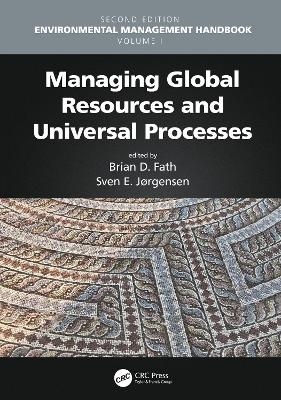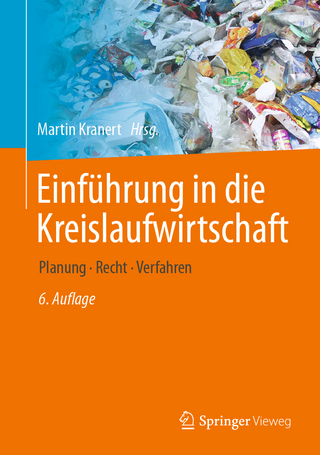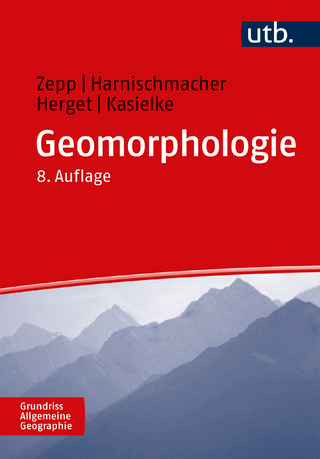
Managing Global Resources and Universal Processes
CRC Press (Verlag)
978-1-138-34263-7 (ISBN)
Bringing together a wealth of knowledge, Environmental Management Handbook, Second Edition, gives a comprehensive overview of environmental problems, their sources, their assessment, and their solutions. Through in-depth entries and a topical table of contents, readers will quickly find answers to questions about environmental problems and their corresponding management issues. This six-volume set is a reimagining of the award-winning Encyclopedia of Environmental Management, published in 2013, and features insights from more than 500 contributors, all experts in their field.
The experience, evidence, methods, and models used in studying environmental management are presented here in six stand-alone volumes, arranged along the major environmental systems.
Features
The first handbook that demonstrates the key processes and provisions for enhancing environmental management
Addresses new and cutting-edge topics on ecosystem services, resilience, sustainability, food–energy–water nexus, socio-ecological systems, and more
Provides an excellent basic knowledge on environmental systems, explains how these systems function, and offers strategies on how to best manage them
Includes the most important problems and solutions facing environmental management today
In this first volume, Managing Global Resources and Universal Processes, the reader is introduced to the general concepts and processes used in environmental management. As an excellent resource for finding basic knowledge on environmental systems, it reflects an extensive coverage of the field and includes the most important problems and solutions facing environmental management today. This book practically demonstrates the key processes, methods, and models used in studying environmental management.
Brian D. Fath is a Professor in the Department of Biological Sciences at Towson University (Maryland, USA) and a Senior Research Scholar at the International Institute for Applied Systems Analysis (Laxenburg, Austria). He has published over 180 research papers, reports, and book chapters on environmental systems modeling, specifically in the areas of network analysis, urban metabolism, and sustainability. He has co-authored the books A New Ecology: Systems Perspective (2020), Foundations for Sustainability: A Coherent Framework of Life–Environment Relations (2019), and Flourishing within Limits to Growth: Following Nature’s Way (2015). He is also Editor-in-Chief for the journal Ecological Modelling and Co-Editor-in-Chief for Current Research in Environmental Sustainability. Dr. Fath was the 2016 recipient of the Prigogine Medal for outstanding work in systems ecology and twice a Fulbright Distinguished Chair (Parthenope University, Naples, Italy, in 2012 and Masaryk University, Czech Republic, in 2019). In addition, he has served as Secretary General of the International Society for Ecological Modelling, Co-Chair of the Ecosystem Dynamics Focus Research Group in the Community Surface Modeling Dynamics System, and member and past Chair of the Baltimore County Commission on Environmental Quality. Sven E. Jørgensen (1934–2016) was a Professor of Environmental Chemistry at Copenhagen University. He earned a doctorate of engineering in environmental technology and a doctorate of science in ecological modeling. He was an honorable doctor of science at Coimbra University (Portugal) and at Dar es Salaam (Tanzania). He was Editor-in-Chief of Ecological Modelling from the journal’s inception in 1975 until 2009. He was Editor-in-Chief for the Encyclopedia of Environmental Management (2013) and Encyclopedia of Ecology (2008). In 2004, Dr. Jorgensen was awarded the Stockholm Water Prize and the Prigogine Medal. He was awarded the Einstein Professorship by the Chinese Academy of Sciences in 2005. In 2007, he received the Pascal Medal and was elected a member of the European Academy of Sciences. He published over 350 papers and has edited or written over 70 books. Dr. Jorgensen gave popular and well-received lectures and courses in ecological modeling, ecosystem theory, and ecological engineering worldwide.
Section I: Anthropogenic Chemicals: Human Manufactured and Activities 1. Acaricides 2. Endocrine Disruptors 3. Herbicides 4. Herbicides: Non-Target Species Effects 5. Insecticides: Aerial Ultra-Low-Volume Application 6. Neurotoxicants: Developmental Experimental Testing 7. Persistent Organic Pesticides 8. Pollutants: Organic and Inorganic 9. Pollution: Genotoxicity of Agrotoxic Compounds 10. Pollution: Pesticides in Agro-Horticultural Ecosystems 11. Pollution: Pesticides in Natural Ecosystems 12. Polychlorinated Biphenyls (PCBs) 13. Toxic Substances Section II: Natural Elements and Chemicals 14. Allelochemics 15. Aluminum 16. Boron: Soil Contaminant 17. Cadmium: Toxicology 18. Carbon: Soil Inorganic 19. Chromium 20. Cobalt and Iodine 21. Copper 22. Globalization 23. Heavy Metals 24. Inorganic Carbon: Composition and Formation 25. Lead: Ecotoxicology 26. Lead: Regulations 27. Mercury 28. Mycotoxins 29. Nitrogen 30. Phenols 31. Phosphorus: Agricultural Nutrient 32. Potassium 33. Radionuclides 34. Rare Earth Elements 35. Strontium 36. Sulfur 37. Sulfur Dioxide 38. Vanadium and Chromium Groups Section III: Basic Environmental Processes 39. Adsorption 40. Cadmium and Lead: Contamination 41. Heavy Metals: Organic Fertilization Uptake 42. Inorganic Carbon: Global Carbon Cycle 43. Inorganic Carbon: Modeling 44. Inorganic Compounds: Eco-Toxicity 45. Leaching 46. Aquatic Communities: Pesticide Impacts 47. Phosphorus: Riverine System Transport 48. Nitrogen: Biological Fixation 49. Nutrients: Best Management Practices 50. Nutrients: Bioavailability and Plant Uptake 51. Nutrient–Water Interactions 52. Pollution: Non-Point Source 53. Pollution: Point Sources 54. Radioactivity 55. Telecouplings
| Erscheinungsdatum | 31.07.2020 |
|---|---|
| Reihe/Serie | Environmental Management Handbook, Second Edition, Six-Volume Set |
| Zusatzinfo | 76 Tables, black and white; 80 Illustrations, black and white |
| Verlagsort | London |
| Sprache | englisch |
| Maße | 178 x 254 mm |
| Gewicht | 1156 g |
| Themenwelt | Naturwissenschaften ► Biologie ► Ökologie / Naturschutz |
| Technik ► Elektrotechnik / Energietechnik | |
| Technik ► Umwelttechnik / Biotechnologie | |
| ISBN-10 | 1-138-34263-7 / 1138342637 |
| ISBN-13 | 978-1-138-34263-7 / 9781138342637 |
| Zustand | Neuware |
| Informationen gemäß Produktsicherheitsverordnung (GPSR) | |
| Haben Sie eine Frage zum Produkt? |
aus dem Bereich


